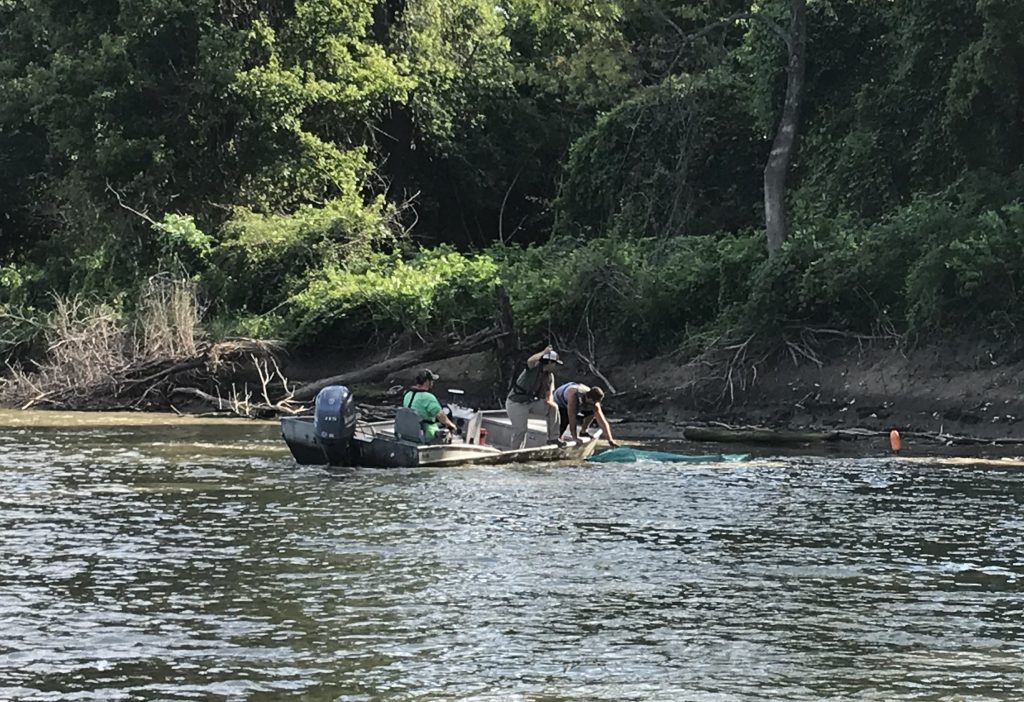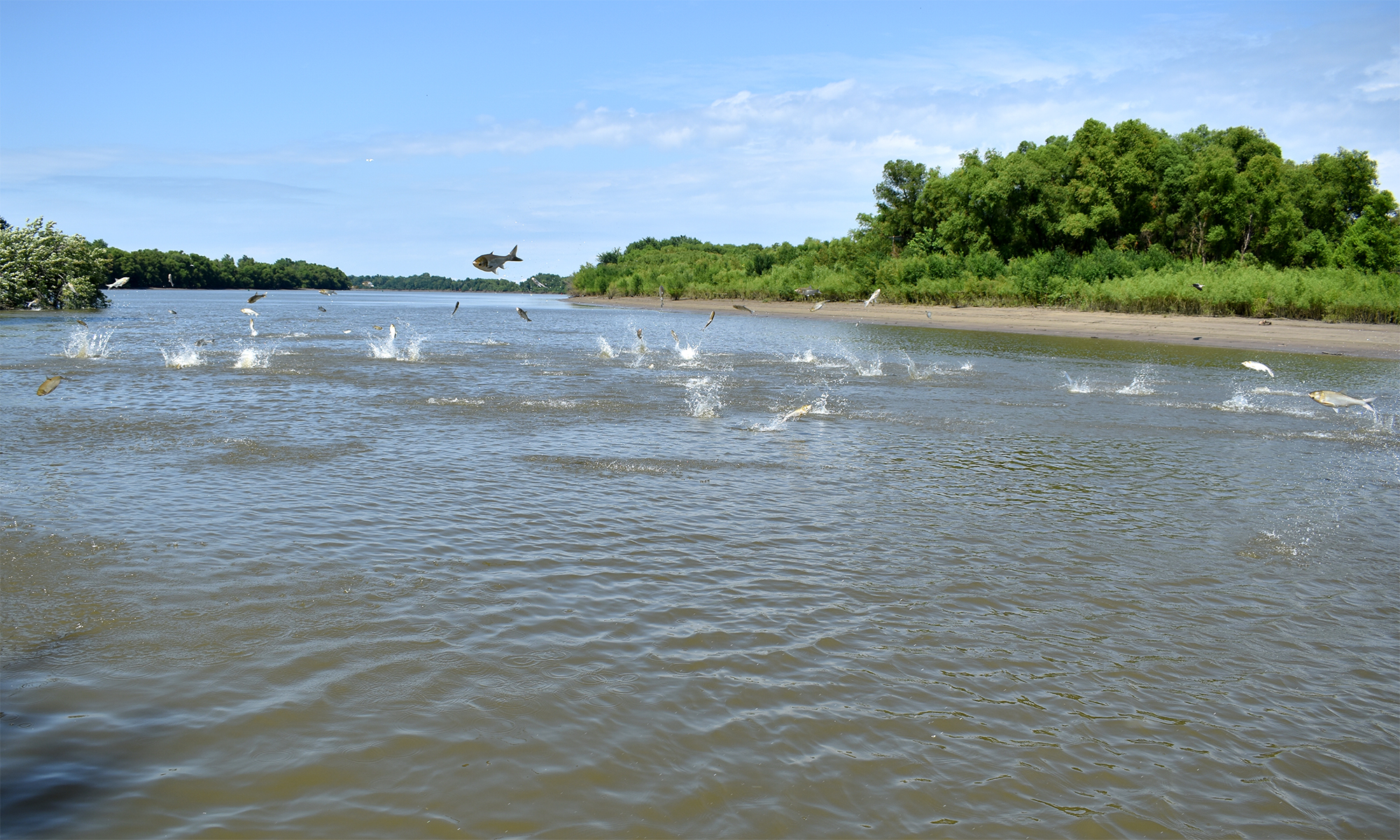Illinois River Biological Station fish community assessment in response to the Illinois Waterway 2020 Lock Closure
Commercial and recreational navigation are persistent and important uses of our navigable waterways (Lambert et al. 2010), but its ecological impact is difficult to assess and poorly understood. The Illinois River is an ecologically significant North American waterway and a series of lock closures in 2020 created a rare opportunity to evaluate ship-induced effects to our native biota. The Illinois Waterway Consolidated Lock Closure occurred from July 1 – September 10 with variable duration of closure for each of the eight locks. This impacted pool-pool navigation, but did not limit intra-pool navigation (Illinois River Consolidated Lock Closures).
Navigation can have detrimental effects to aquatic ecosystems at several hierarchical levels (Gabel et al. 2017). Mechanical wave depression and resulting energy from ship-induced waves can directly affect bank and channel morphology and contribute to resuspension of sediments (Rapaglia et al. 2011). Resulting increases in turbidity from sediment resuspension reduces primary productivity, macroinvertebrate abundance and diversity (Kefford et al. 2010), macrophyte growth and colonization, and composition and abundance of fish communities (Zajicek and Wolter 2018) using main channel border habitats. Ship-induced waves have had effects on all stages of fish ontogeny ranging from displacement and stranding, changes in species abundance and community composition, and lowered foraging efficiency contributing to reductions in growth and body condition. These effects are either a direct or indirect response to navigation frequency or boat-induced wave action. Abundance of rheophilic and lithophilic fish assemblages have been notably affected by the duration and frequency of boat passage (Zajicek and Wolter 2018). Despite evidence of ship-induced fish effects, assessment of these impacts has not been evaluated before on the Illinois River. A standardized approach building on the architecture of the LTRM framework is being used to comprehensively assess fish response to the 2020 lock closure on the Illinois waterway.

The exiting Long Term Resource Monitoring element (LTRM) framework on the Illinois River is a strong foundation to detect shifts in fish abundance and composition, but it currently only collects data on the La Grange Reach of the Illinois River. Although this is informative to assess lock closure impacts to the La Grange Reach, it is a compartmentalized response to a system-wide effect. To assess the effects of lock closure system-wide, expansion of LTRM methods accompanied by ship-induced related explanatory variables (i.e., vessel frequency, sediment resuspension, flow velocity, zooplankton abundance, water temperature, wave height) are needed. Existing infrastructure and sampling on the Illinois River is being standardized and leveraged to help meet this need. This includes existing main-channel border electrofishing by the IRBS’s Long Term Survey and Assessment of Large River Fishes in Illinois (LTEF) from the Alton-Dresden Reaches and a recent expansion to this effort in the Peoria Reach that also includes backwater and side-channel habitats, IRBS black carp hoop net sampling in the La Grange Reach, ILDNR invasive carp monitoring program electrofishing and mini fyke netting in Lockport-Marseilles Reaches, and additional monitoring by the Fish and Wildlife Service and Army Corps of Engineers. By leveraging the data of existing projects and filling in the gaps, we are able to collect and evaluate fisheries response throughout the entire Illinois River prior to, during, and after the proposed Illinois River Lock Closure (2019-2021). We thank the US Army Corps of Engineers and the Upper Mississippi River Restoration program for support!
Staff from IRBS that work on this project are Brandon Harris, Mike Spear, Andrew Mathis, Sam Schaick, and Jesse Williams.

